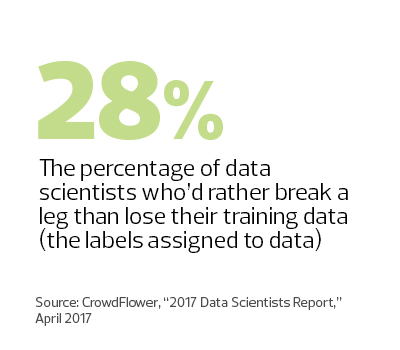Can Machine Learning Become More User-Friendly?
Machine learning — a form of artificial intelligence that uses algorithms and large data sets to derive insights in real time — is way more than hype.
Gartner predicts that by 2018, 45 percent of the fastest-growing companies will have fewer employees than instances of smart machines.
It’s clear that machine learning offers companies a competitive advantage, but is it something that small- and medium-sized business can adopt? The algorithms churning the data are often opaque, and things can go wrong, from the humorous (automated email replies that write “I love you” to a colleague) to the hazardous (a factory robot grabbing a human instead of a machine part).
But today’s data scientists are developing next-generation approaches to make machine learning more, well, approachable.
Make AI Algorithms More Understandable
One of the issues surrounding machine learning is that when algorithms run off the rails, the average IT expert can’t fix them, and many companies (even large ones) don’t have data scientists on staff.
Experts at the Massachusetts Institute of Technology are trying to solve this problem by making algorithms more transparent. At this year’s MassIntelligence conference in Boston, Sam Madden, professor of electrical engineering and computer science at MIT, pointed out that machine learning algorithms are often more “dark art than science.”
To combat this issue, MIT created SystemsThatLearn@CSAIL, an initiative to build next-gen machine learning algorithms that are much more understandable, providing IT experts — not just data scientists — the ability to pinpoint and fix problems.
Train Machine Learning Programs More Effectively
Some experts, however, don’t think it’s the algorithms that need retooling. It’s better labeling of data — called training data — that’s at the heart of issue.
An algorithm, no matter how sophisticated, can only learn if humans feed it training data. For a self-driving car, that data would include labeling images, so the car would know if it’s seeing a lamppost or a human. If the car keeps mixing up lampposts and people, humans need to label the data better.

“There’s a real misperception that it’s all about the algorithm,” says Randi Barshack, vice president of marketing at CrowdFlower, an SMB in San Francisco that develops data tools. “But it’s really about the training data.”
CrowdFlower conducted a survey among data scientists to see which they thought was more important: training data or algorithms. Training data won easily, with 52 percent of data scientists saying they would rather accidently delete their machine learning code than delete their training data.
Now that machine learning algorithms are more widely available, it’s a huge opportunity for small businesses to take advantage of advanced technology.
“The key is making sure that those algorithms get accurate training data,” Barshak says. “AI is embedded within the application. But you need to train the AI.”









